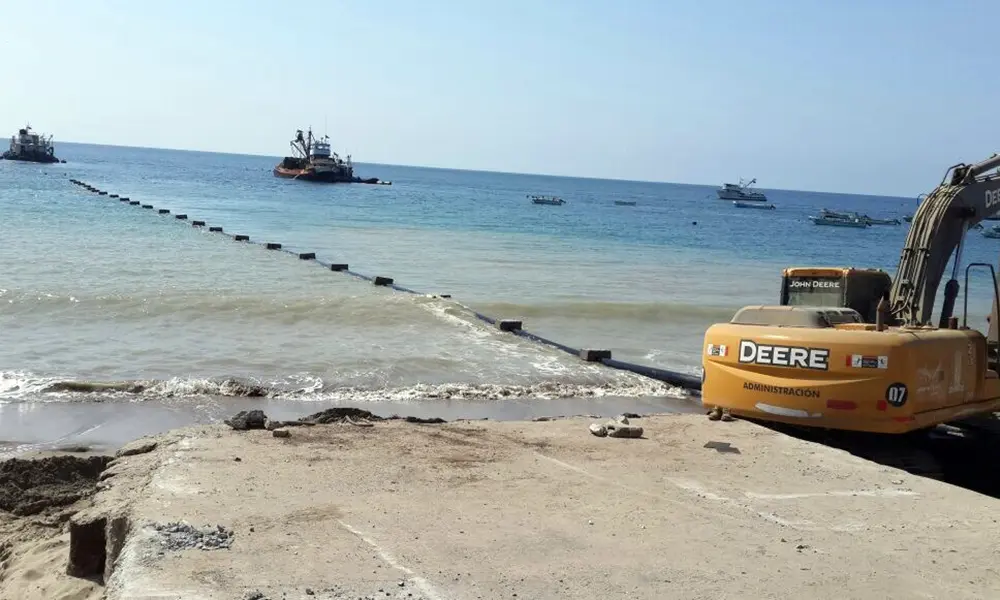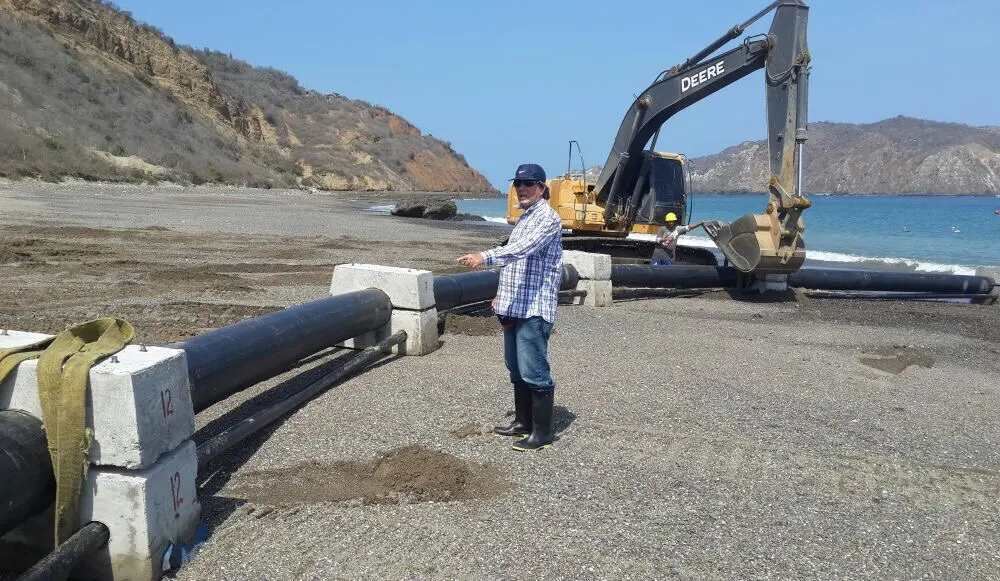Fish Discharge Lines
Installation of Pexgol Pipes to Transport Fish.
Case Study Nº
71
Customer
|
Working Conditions
Pexgol Pipes
Application
Lenght
Categories

The Challenge
Tecnológica de Alimentos S.A. (TASA) required to transport Anchovy fish that measured between 12 and 15 cm from their vessels to the processing plant.
The fish was transported using HDPE pipes. The fish lost it mass due to rubbing against the walls of the pipes. These pipes were joined by thermofusion, which caused an internal burr (protruding portion of material) in the joints and increased damage to the fish. For this reason 450 mm HDPE pipes and a large amount of water must be used to transport the fish. The latter caused a considerable increase in the costs of water treatment.
Pexgol Solution
The client decided to replace its HDPE pipes and install 4 Pexgol lines for fish unloading in 3 plants of the company, with a length of 700 meters each and a diameter of 355 mm (14”) class 10. In the installation, concrete pieces were put on the pipe in order to make sure it doesn’t float on the sea.
Among the main advantages that were verified in this application were:
- Smooth internal surface: Decreased mass loss, which results in the fish practically intact at the exit of the discharge, and therefore generates a better quality final product.
- Lower costs for water treatment: It was possible to lower HDPE pipes of 450 mm PN 10 to Pexgol 355 mm (14”) class 10 pipes. Since it is a less rough pipe material, it allows the fish to be transported with less water, reducing more than 20% the cubic meters of water per linear meter.
- Electrofusion unions: 178 unions were made that did not leave any type of internal burr (and therefore generate less damage to the fish).
Related Case Studies
Success in Agricultural Desalination: Water Supply Challenges
|
Vertical Dewatering
|
From Steel Struggles to Pexgol Progress
|
Water Transport in Complex Terrain
|










